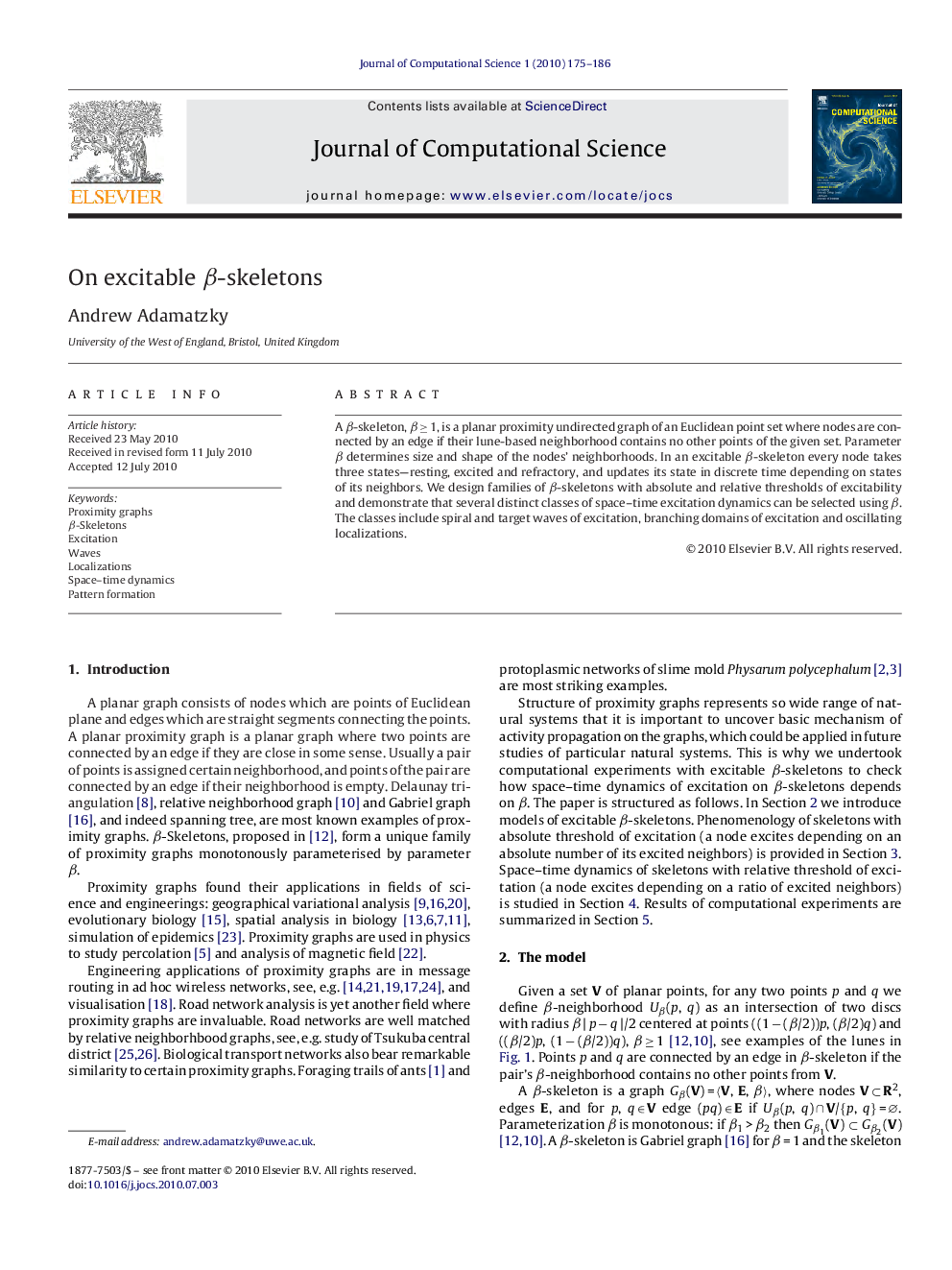| Article ID | Journal | Published Year | Pages | File Type |
|---|---|---|---|---|
| 429636 | Journal of Computational Science | 2010 | 12 Pages |
A β-skeleton, β ≥ 1, is a planar proximity undirected graph of an Euclidean point set where nodes are connected by an edge if their lune-based neighborhood contains no other points of the given set. Parameter β determines size and shape of the nodes’ neighborhoods. In an excitable β-skeleton every node takes three states—resting, excited and refractory, and updates its state in discrete time depending on states of its neighbors. We design families of β-skeletons with absolute and relative thresholds of excitability and demonstrate that several distinct classes of space–time excitation dynamics can be selected using β. The classes include spiral and target waves of excitation, branching domains of excitation and oscillating localizations.
Research highlightsSkeletons are planar proximity graphs, where two nodes are connected by an edge if certain domain between the nodes is empty.We analysed excitation dynamics on a smoothly parameterised family of planar proximity graphs—β-skeletons.We found that overall level of activity in an absolutely excitable β-skeleton is proportional to node packing density and inversely proportional to β. We demonstrated that space–time dynamics of absolutely excitable β-skeletons can be classified as follows: spiral and target waves, disordered dynamics with irregularly traveling wave-fragments, slowly spreading domains of excitation, and small localized stationary domains of oscillatory activity. Transition of a skeleton between these classes is controlled by changing β and density of node packing. Both β and density affect distribution of node degrees. We provided a parameterization of the classes using just one parameter—average node degree.
